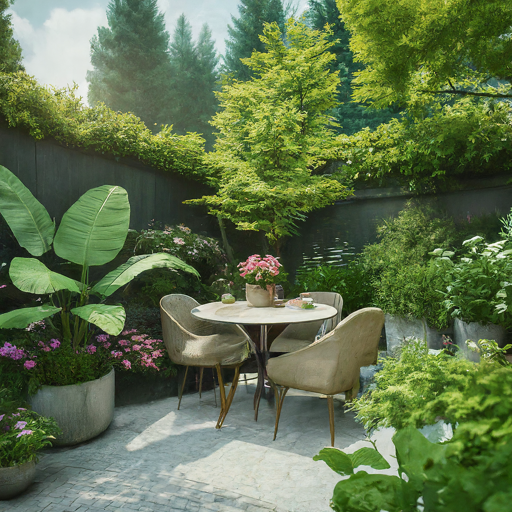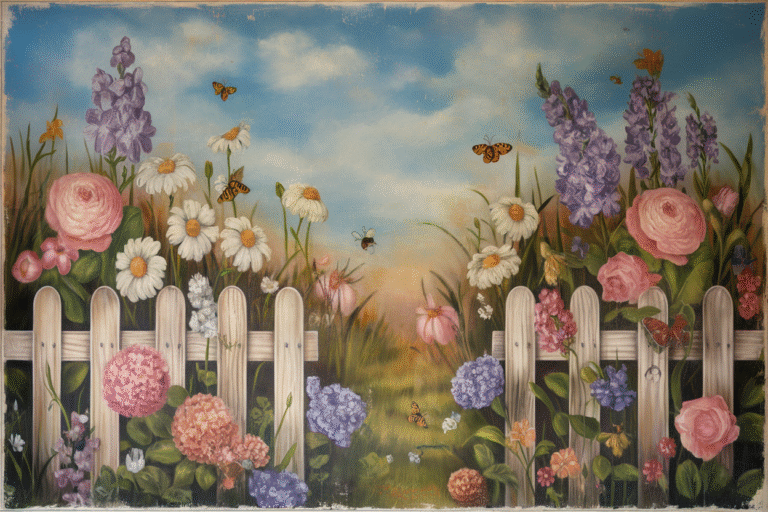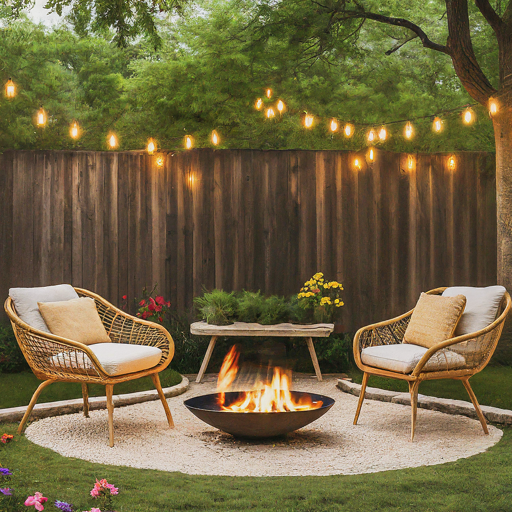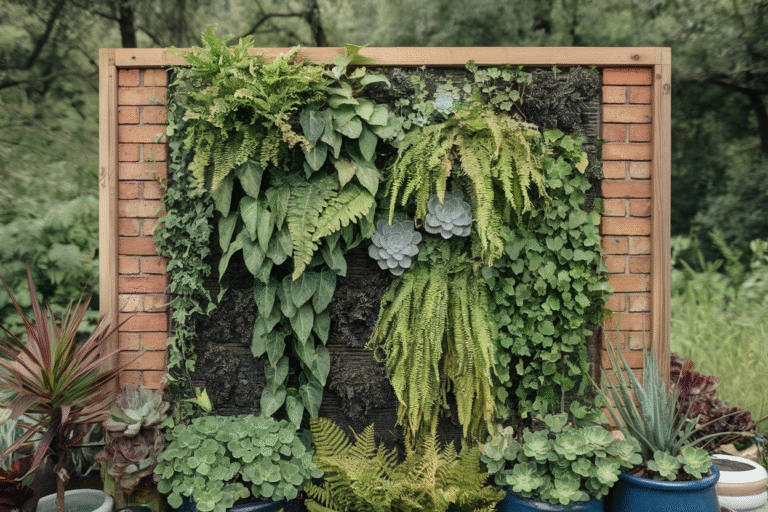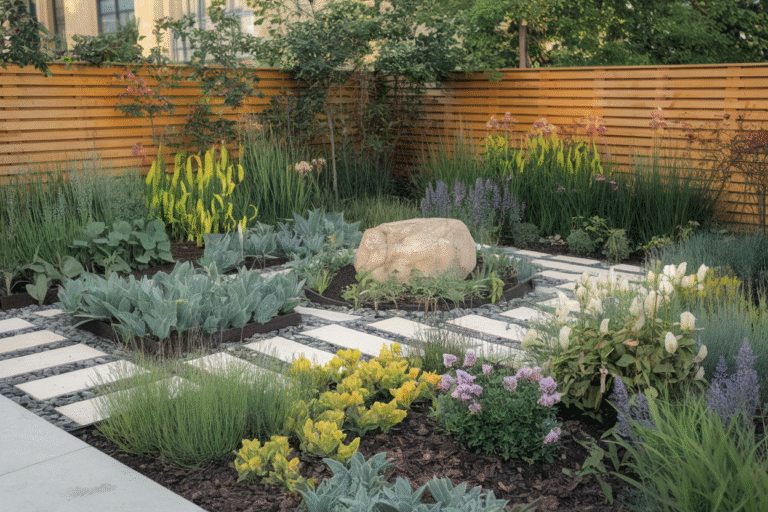20 House Cottage Garden Ideas
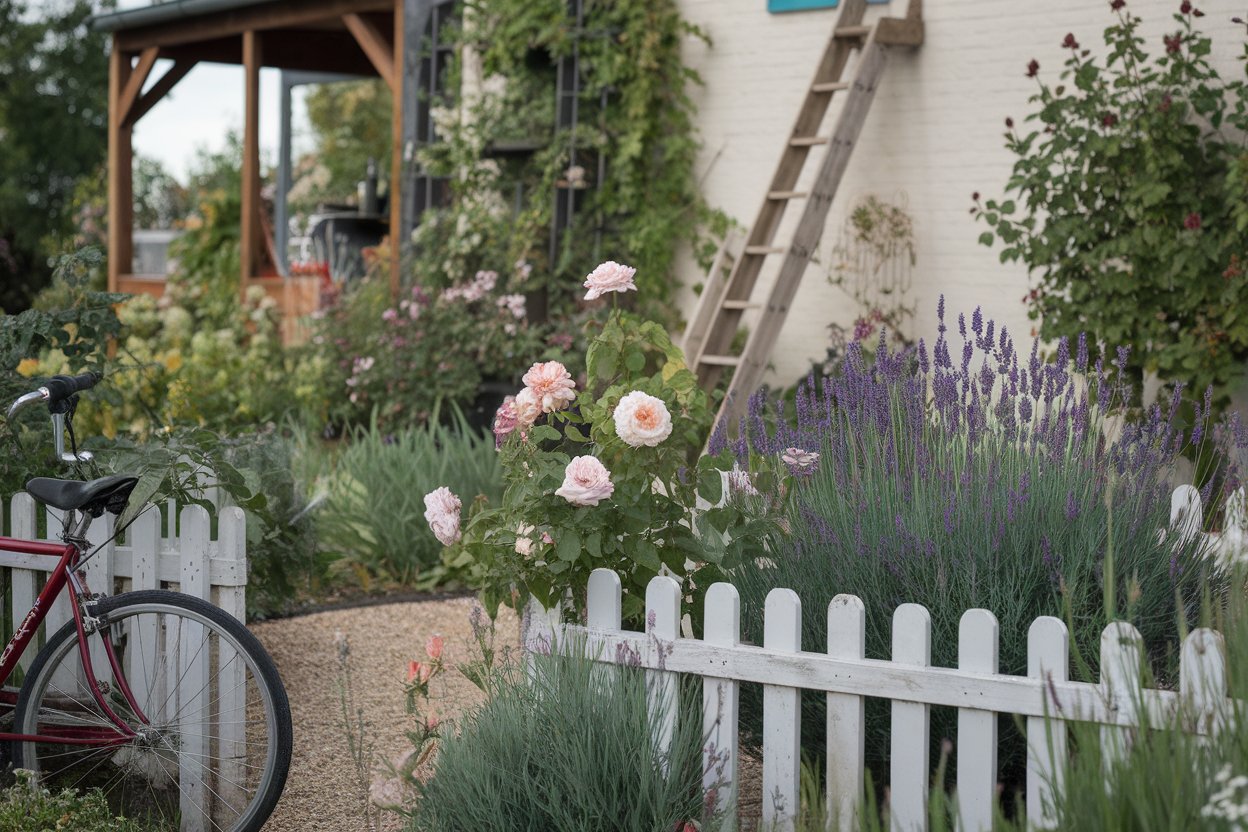
A cottage garden isn’t just a patch of land; it’s a storybook come to life—a place where nature plays dress-up in blooms and greenery, inviting you to step into a world of charm and tranquility.
If you’ve ever dreamed of escaping the hustle and bustle by stepping into your own lush, flower-filled haven, you’re in the right place.
Today, I’ll walk you through 20 delightful house cottage garden ideas that will help you craft an outdoor space bursting with personality, color, and that cozy feeling only a cottage garden can deliver.
What Exactly is a Cottage Garden?
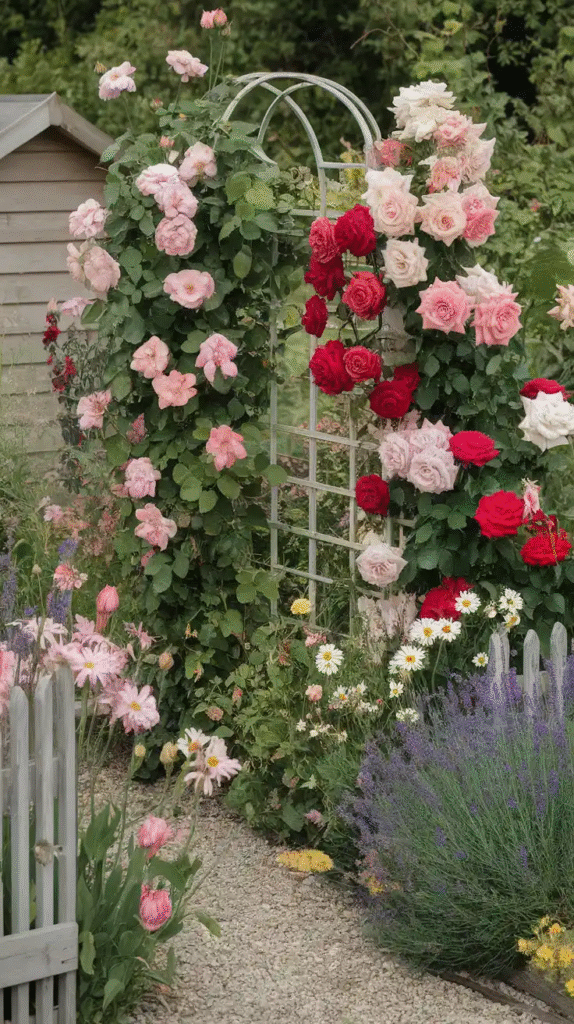
Before diving into the ideas, let’s unpack the essence of a cottage garden. Think of it as a whimsical, informal garden style rooted in traditional English countryside charm.
It’s all about an overflowing mix of flowers, herbs, and vegetables growing together in an almost haphazard way that feels organic yet intentional. The beauty of a cottage garden lies in its imperfections — the wild paths, the mismatched plants, the blend of textures, colors, and scents creating a sensory feast.
If your green thumb is itching for some creative freedom, a cottage garden invites you to embrace nature’s playful side. Ready to start? Let’s get those hands dirty!
1. Embrace Layering with Height Variations
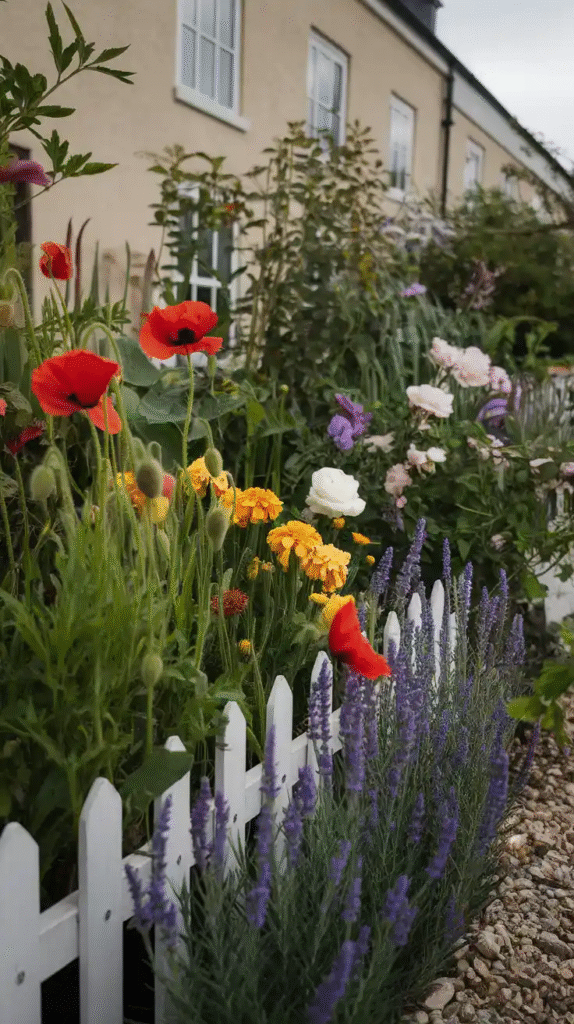
One of the secrets to a captivating cottage garden is layering plants by height to create depth and visual interest. Imagine a living painting where tall hollyhocks and delphiniums tower in the back, mid-height roses and lavender form the middle ground, and low-growing ground covers like creeping thyme creep around the edges.
When planting, think vertically — your garden isn’t just a flat canvas; it’s a 3D masterpiece. Use trellises for climbing roses or sweet peas to add even more height and charm. This layering mimics natural growth patterns and ensures your garden feels lush and full.
2. Mix Perennials and Annuals for Year-Round Color
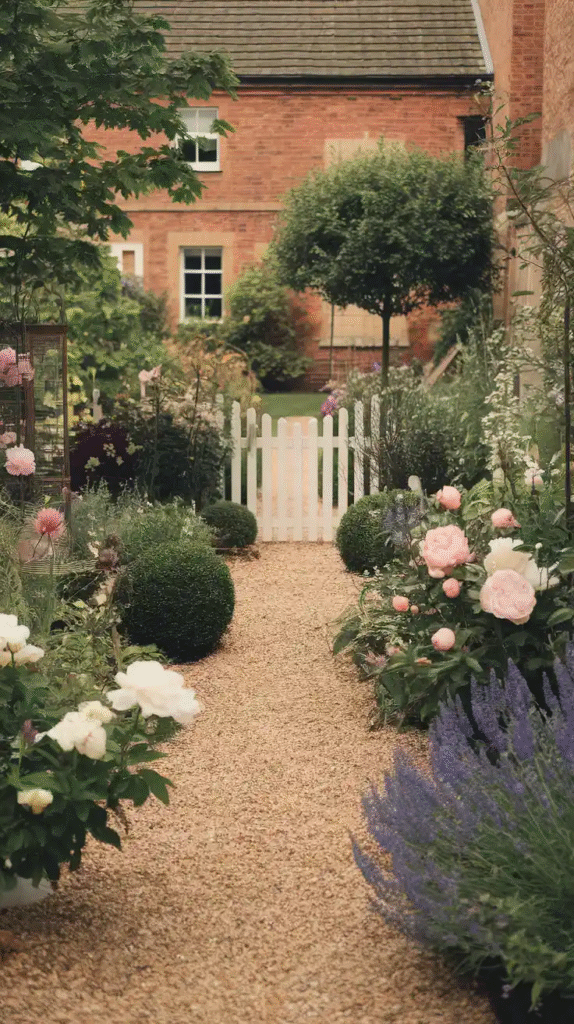
Cottage gardens are famous for their uninterrupted display of color. Achieve this by combining the reliability of perennials like peonies, foxgloves, and bleeding hearts with the vibrant, seasonal bursts of annuals such as cosmos, nasturtiums, and calendula.
This dance between long-lasting and seasonal bloomers means your garden is never dull. I once planted a patch of foxgloves beside cheerful marigolds; the blend kept my garden humming from spring well into fall, like a well-rehearsed symphony.
3. Incorporate Traditional Cottage Plants
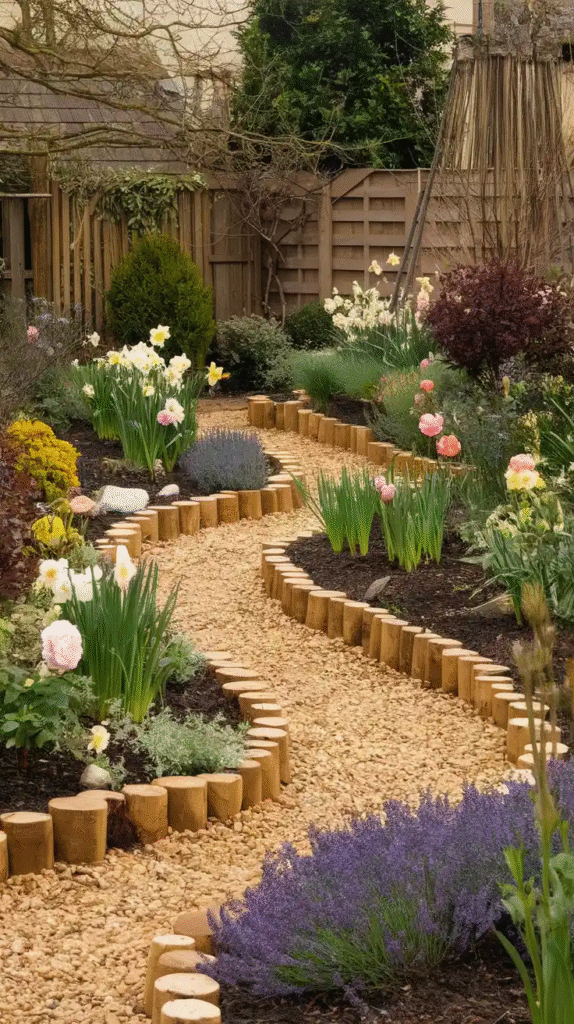
Certain plants are synonymous with the cottage garden style. Delphiniums, sweet peas, lavender, roses, foxgloves, daisies, and hollyhocks are your go-to stars. Their old-fashioned appeal evokes nostalgia and warmth.
Adding these traditional plants is like inviting old friends to your garden party. They bring history, fragrance, and a story to tell. Lavender, for instance, is not only pretty but also practical, deterring pests and filling the air with a calming scent.
4. Create Winding Paths with Natural Materials
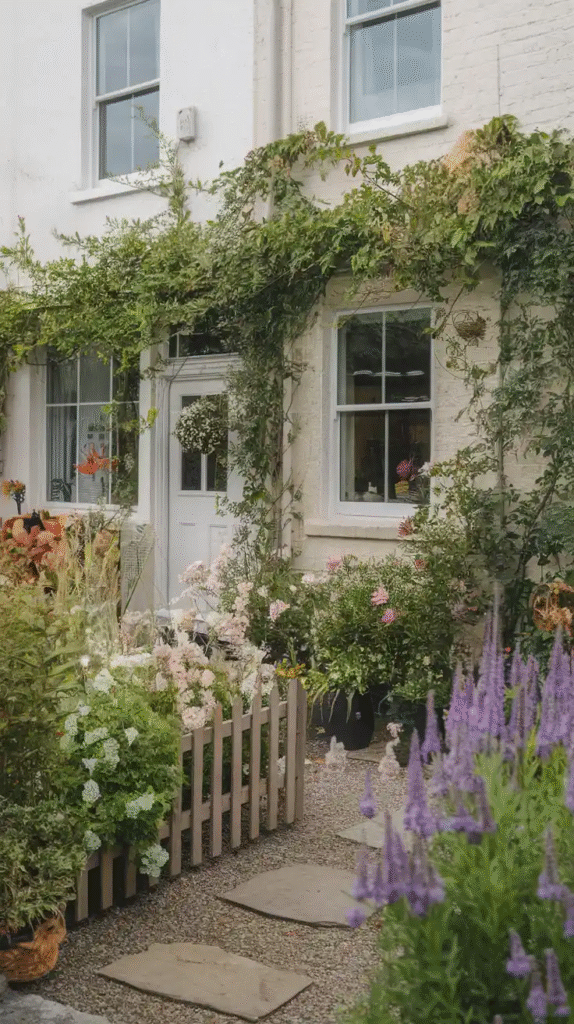
Straight lines are a no-no in cottage gardens. Think of paths as the veins of your garden, meandering gently to invite exploration. Use natural materials like gravel, brick, or flagstones to craft rustic walkways.
Paths don’t just guide your feet; they guide your imagination. When I laid a gravel path edged with thyme, it smelled heavenly every time I walked barefoot, making daily strolls a sensory delight.
5. Add a Rustic Wooden Arch or Gate
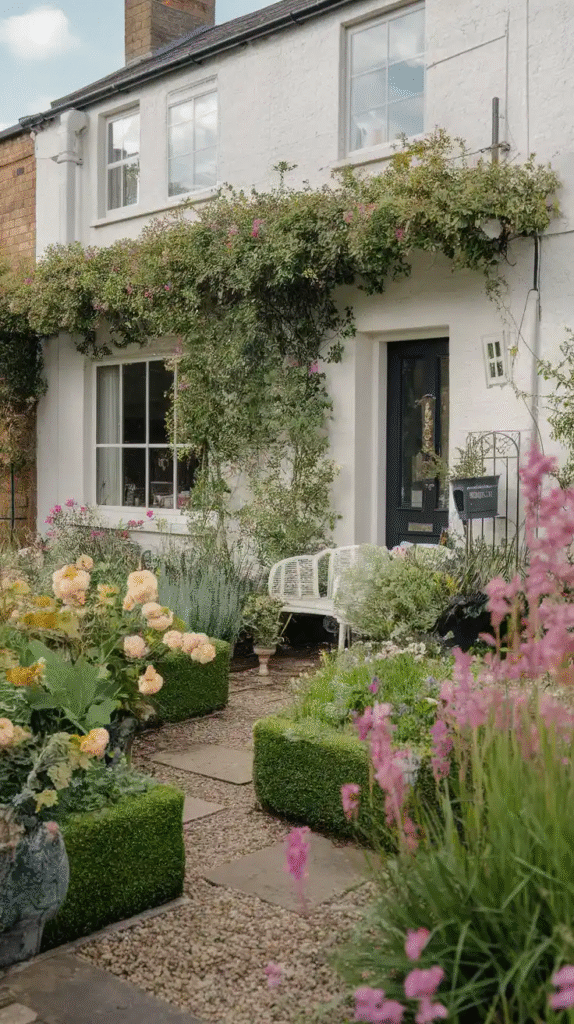
A wooden arch or gate can serve as a magical portal from the everyday world into your enchanting garden. It also provides vertical space for climbers like roses, clematis, or honeysuckle.
There’s something almost fairytale-like about stepping through a vine-wrapped arch into a colorful garden room. It sets the mood and marks the garden as a special place where time slows down.
6. Incorporate Edible Plants with Ornamentals
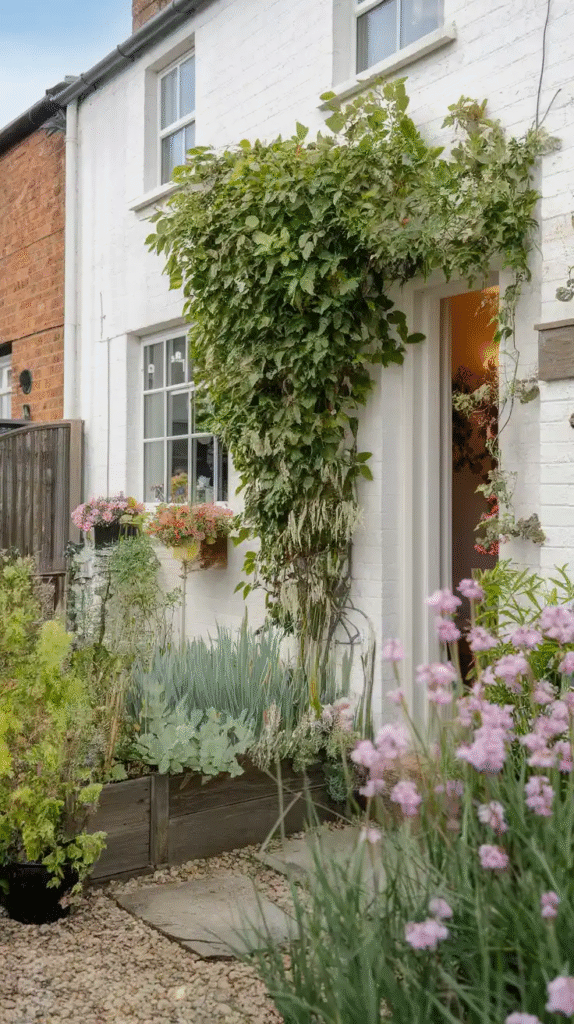
Cottage gardens have roots in practicality — the blend of beauty and usefulness. Integrate herbs such as rosemary, thyme, and mint alongside ornamentals, or sneak in vegetables like kale, chard, and peas.
Not only do edible plants add texture and fragrance, but they also reward your effort with fresh ingredients. Plus, seeing your garden provide food feels deeply satisfying — like your own little green pantry.
7. Use Weathered and Vintage Garden Decor
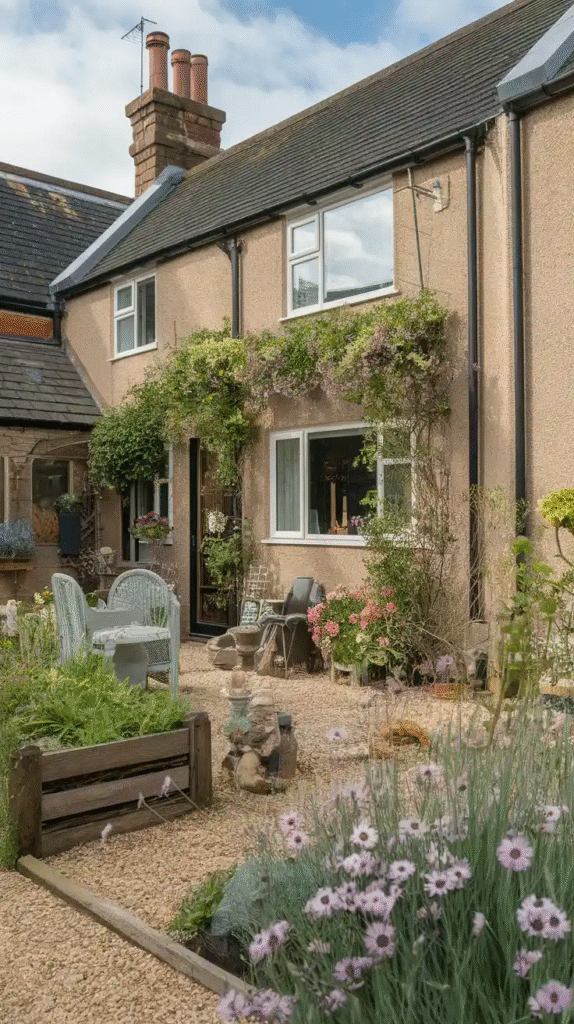
Rustic elements such as weathered watering cans, old wheelbarrows, ceramic pots, and wrought iron furniture amplify the cottage vibe. These pieces don’t have to be pristine; in fact, patina and wear add character.
I found an old iron bench at a flea market that now sits under a blooming wisteria vine, creating a perfect reading nook. It’s amazing how these vintage touches make a garden feel lived-in and loved.
8. Plant in Abundance — Think Overflowing Beds
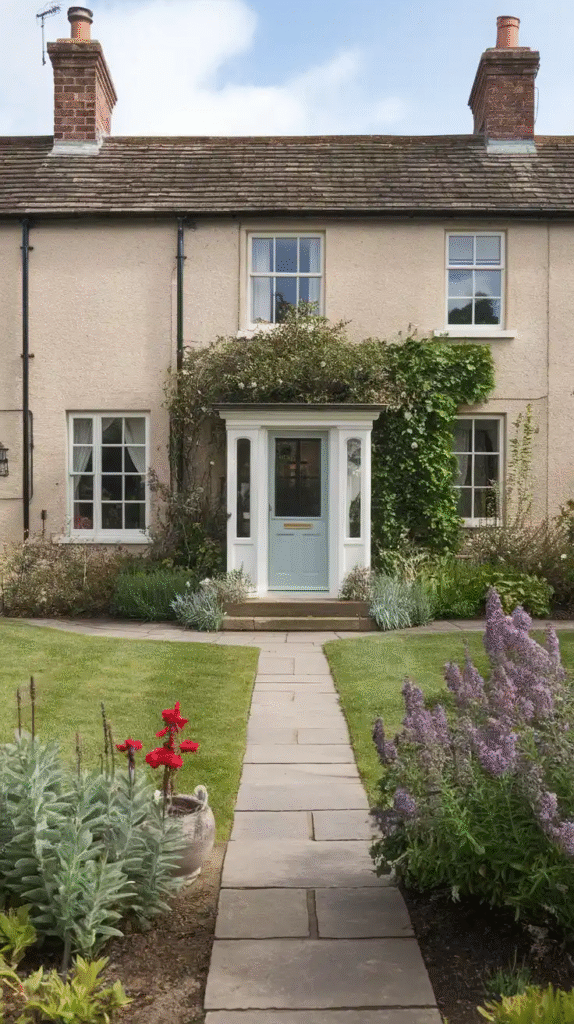
Cottage gardens aren’t shy about filling every inch of space. Plants grow shoulder-to-shoulder, overflowing beds with blooms and greenery spilling over edges. This abundance feels inviting, like nature’s generosity on display.
Don’t be afraid to plant densely. When you allow flowers to mingle freely, you create a tapestry of colors and textures that’s irresistible.
9. Add a Water Feature for Tranquility
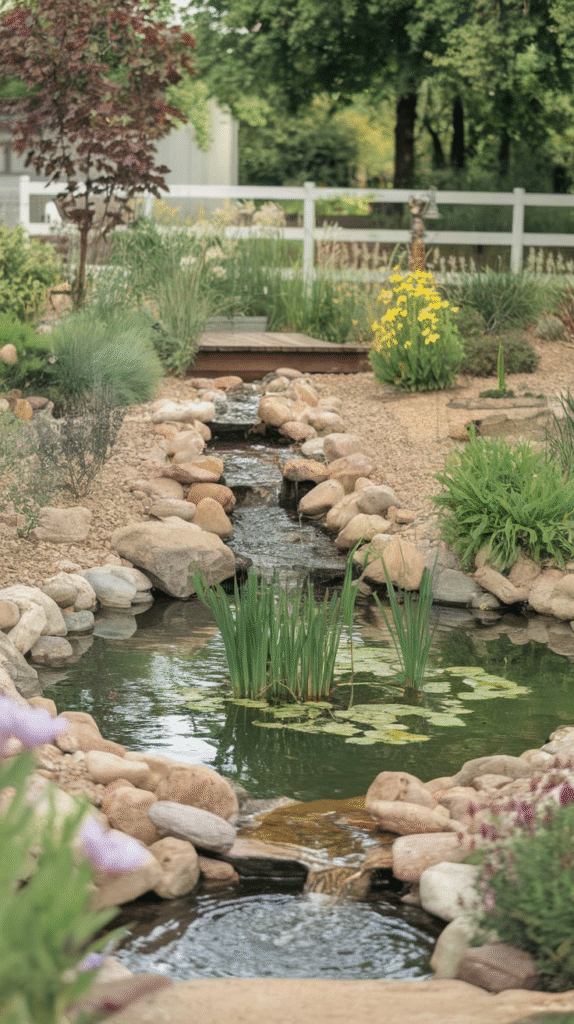
A small pond, birdbath, or even a rustic fountain brings the soothing sound of water into your garden. It attracts birds and wildlife, adding life and movement to the scene.
I once installed a simple birdbath surrounded by lavenders and daisies. The buzzing bees and chirping birds transformed my garden into a lively ecosystem, a peaceful refuge right outside my door.
10. Use Soft, Natural Colors
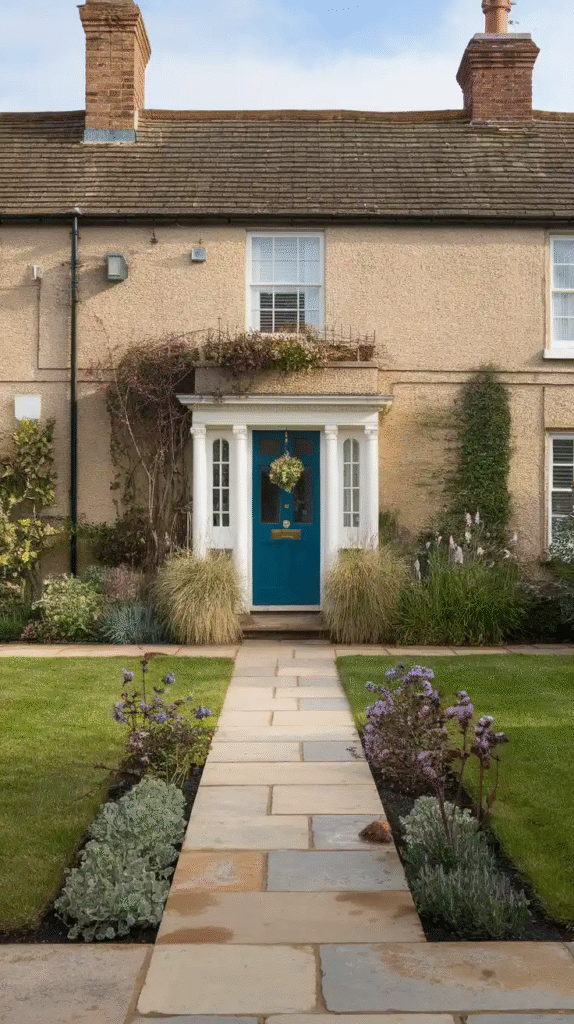
While cottage gardens are bursting with color, the overall palette often leans towards soft pastels and natural hues: pale pinks, creamy whites, lavender blues, buttery yellows, and gentle greens.
This color scheme soothes the eyes and enhances the garden’s dreamy atmosphere. It’s like a gentle watercolor painting you can walk into.
11. Incorporate Climbing Plants Everywhere
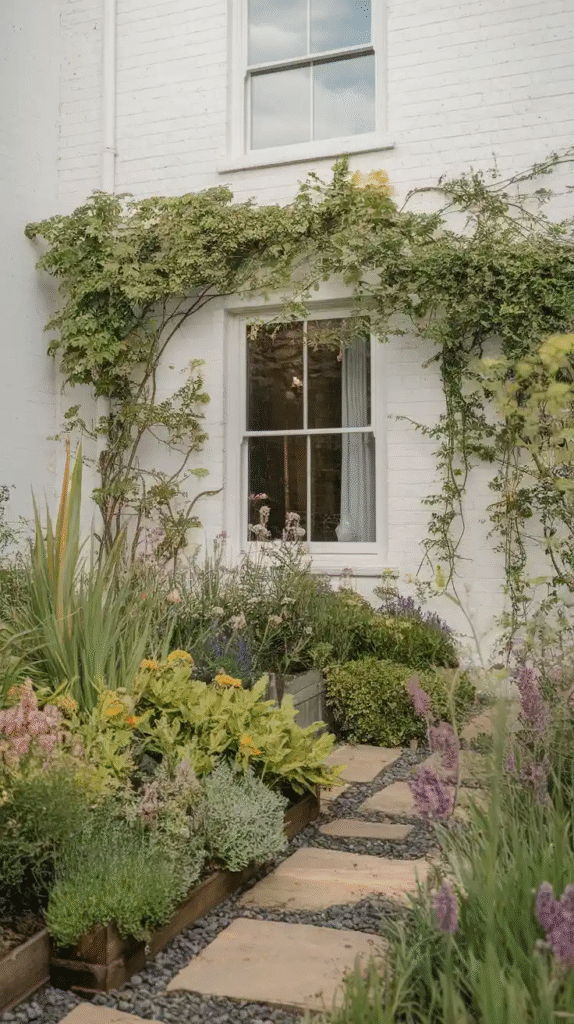
Climbing plants are the ivy on your garden’s soul. Climbing roses, clematis, jasmine, and honeysuckle transform fences, walls, and pergolas into flowering masterpieces.
I love how a wall covered in clematis becomes not just a barrier but a fragrant, floral curtain that invites exploration and wonder.
12. Build Raised Beds or Borders from Natural Stone
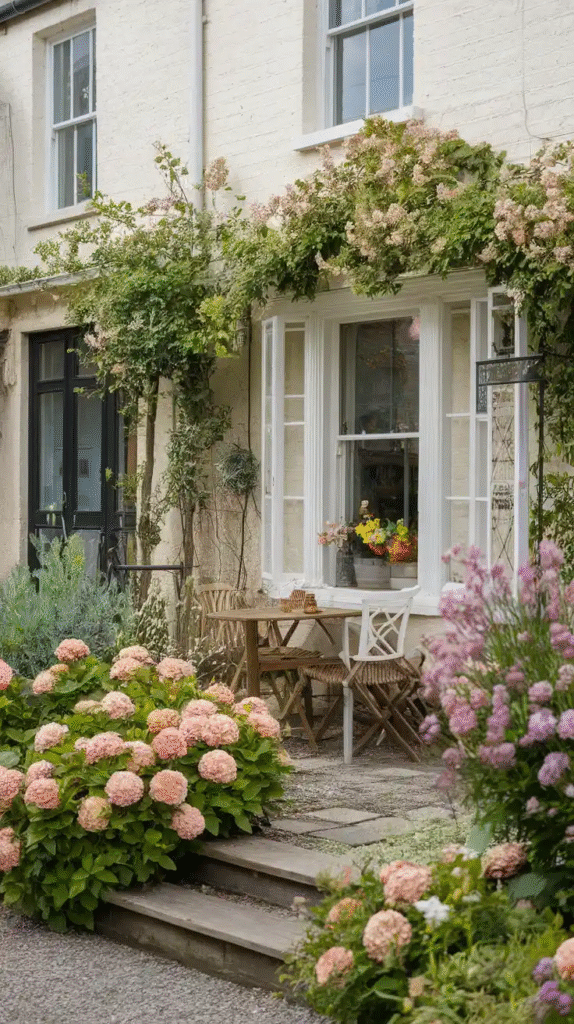
Raised beds or borders made from natural stone or bricks complement the rustic, informal style of a cottage garden. They help contain the exuberant growth and add texture.
Stone adds permanence and structure while still feeling earthy and connected to the land. It’s like framing a vibrant painting with an old wooden frame — the garden shines even brighter.
13. Plant Fragrant Flowers to Engage the Senses
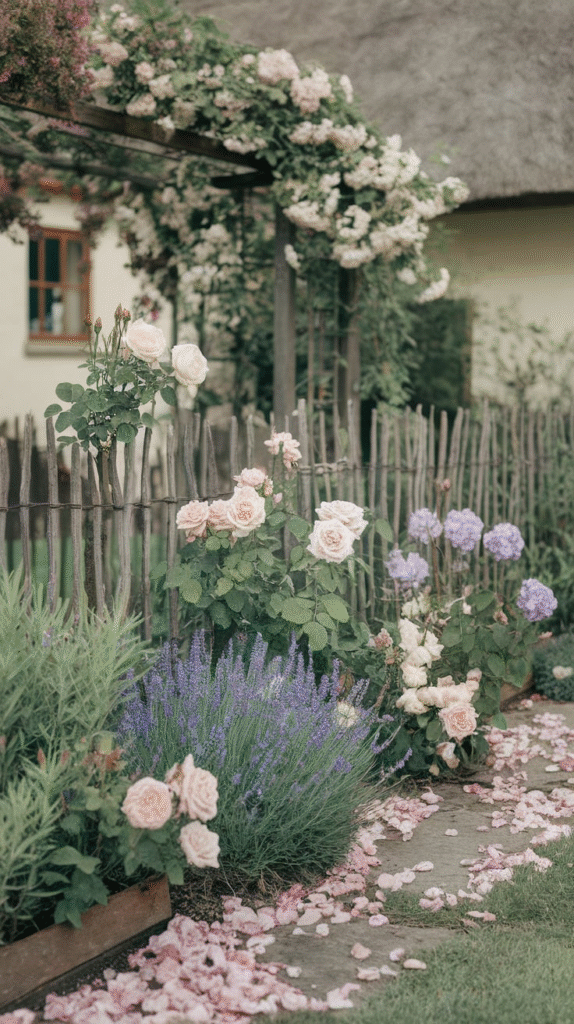
Cottage gardens are a multisensory experience. Adding fragrant flowers like lilac, sweet peas, and gardenias ensures every breeze brings a pleasant aroma.
I find that on warm evenings, the scent of jasmine and honeysuckle around my garden bench is enough to wash away the day’s worries. It’s nature’s therapy session.
14. Include Wildlife-Friendly Elements
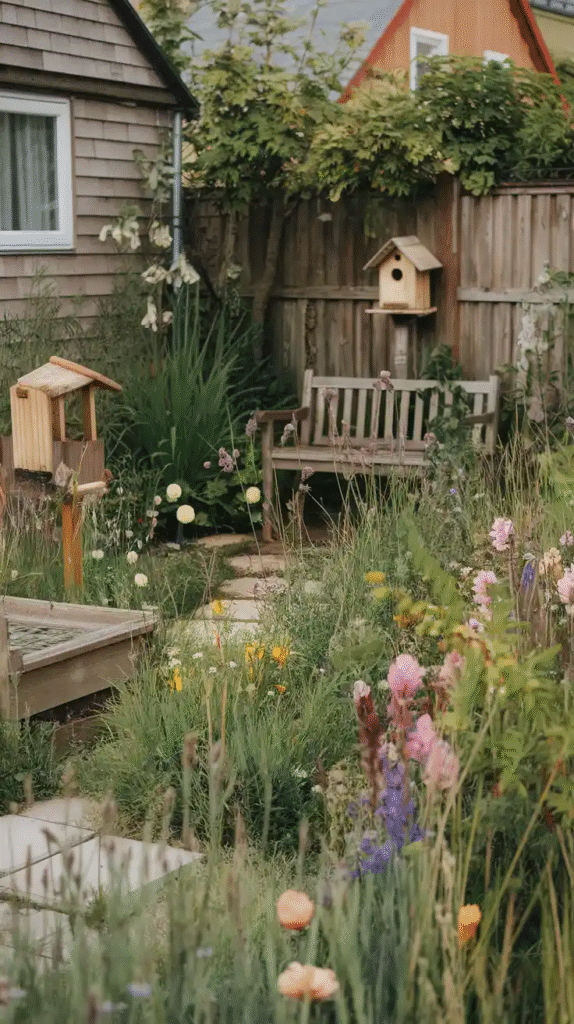
Invite butterflies, bees, and birds by planting nectar-rich flowers and providing water and shelter. A garden buzzing with life feels vibrant and alive.
Even a small bee hotel or a bird feeder tucked into a hedge creates a microhabitat that supports biodiversity and offers daily delight.
15. Use a Mix of Textures and Shapes
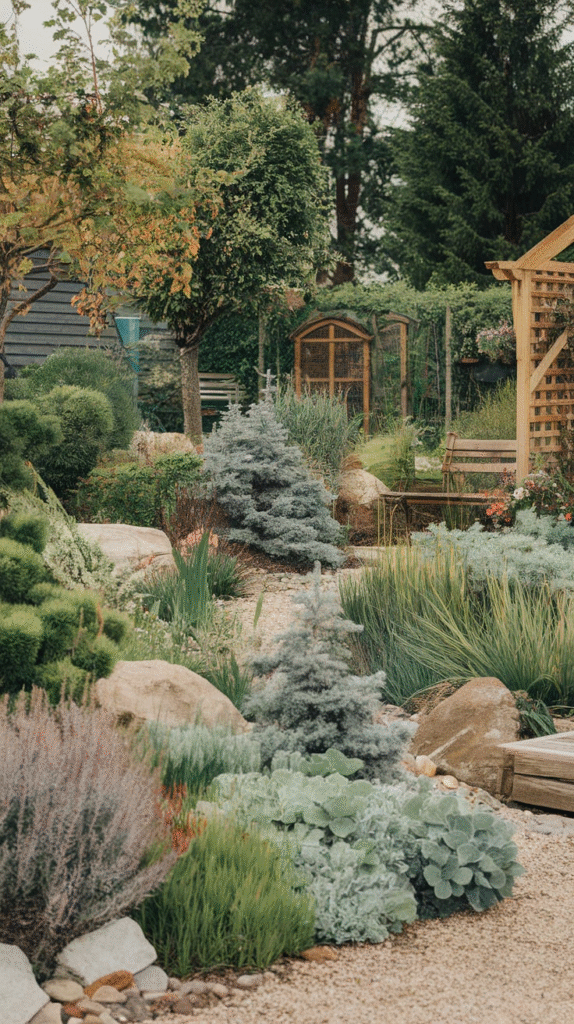
Variety is the spice of life, and it’s essential in a cottage garden. Mix soft, feathery foliage with broad leaves, round blooms with spiky ones, and delicate petals with bold flowers.
This contrast adds intrigue and ensures your garden never looks flat or boring. It’s like having a well-composed orchestra where every instrument plays a unique part.
16. Create Cozy Seating Nooks
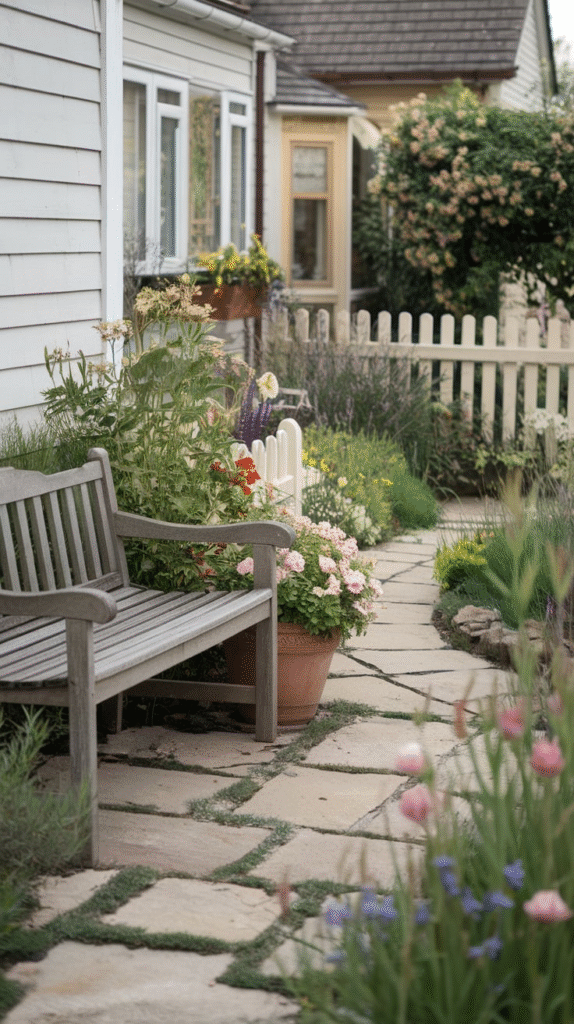
Your garden should be a retreat. Incorporate small benches, wrought iron chairs, or even a hammock tucked into a quiet corner surrounded by flowers.
Having a designated spot to sit and soak in your garden makes all the hard work worthwhile. I love how even a simple wooden bench beneath a canopy of roses feels like a throne in my private kingdom.
17. Use Mulch to Keep It Low Maintenance
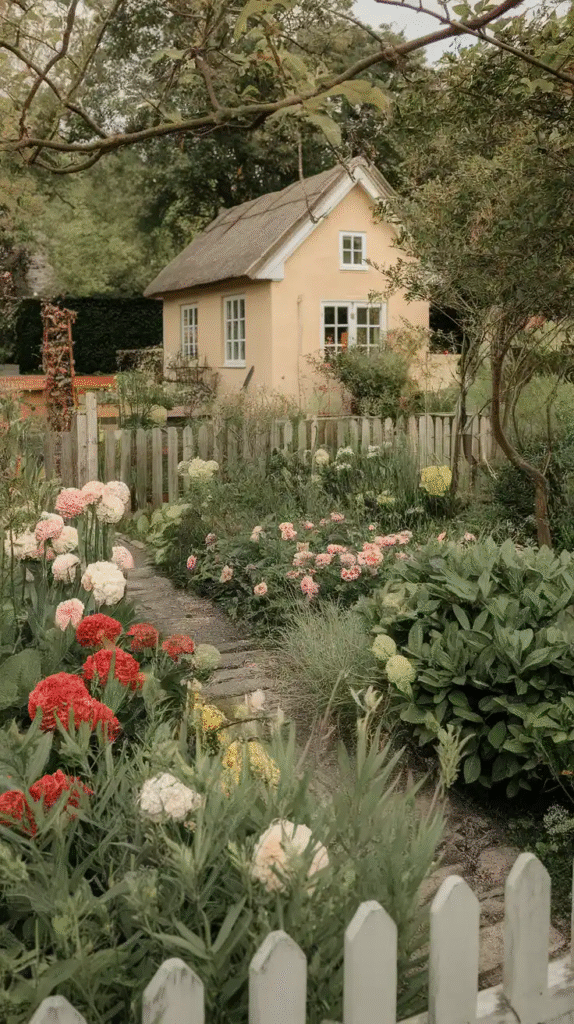
While cottage gardens can look wild, some smart gardening keeps them manageable. Mulch helps suppress weeds, retain moisture, and keep soil healthy.
Organic mulches like bark chips or straw also add to the natural feel. It’s like laying a cozy blanket over your garden bed, protecting it as it grows.
18. Incorporate Seasonal Interest with Bulbs
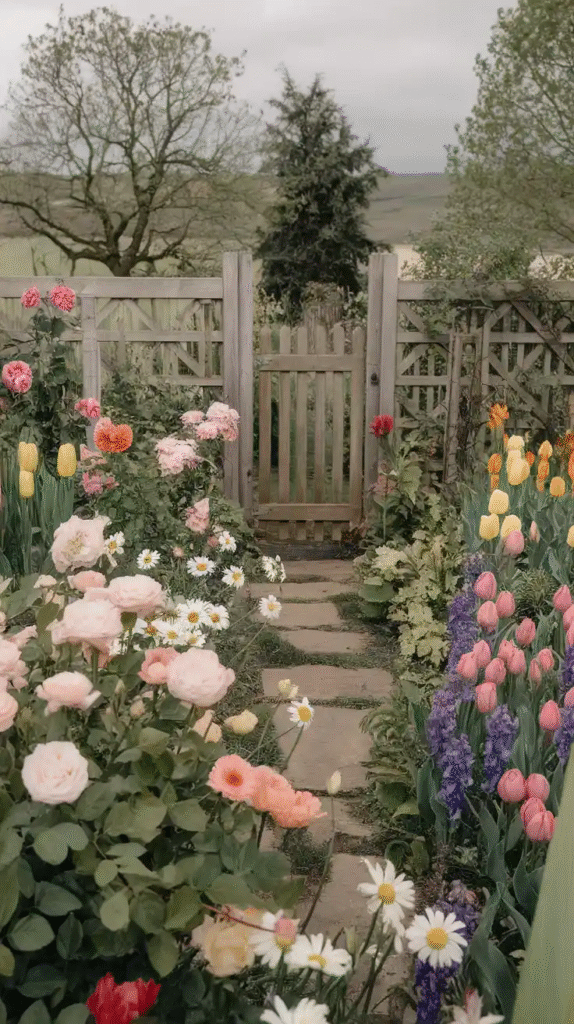
Plant bulbs like daffodils, tulips, and crocuses to ensure early spring color before many other plants wake up.
This early burst of life feels like the garden’s first breath after winter’s sleep, filling you with hope and anticipation for the season ahead.
19. Let Wildflowers Have a Moment
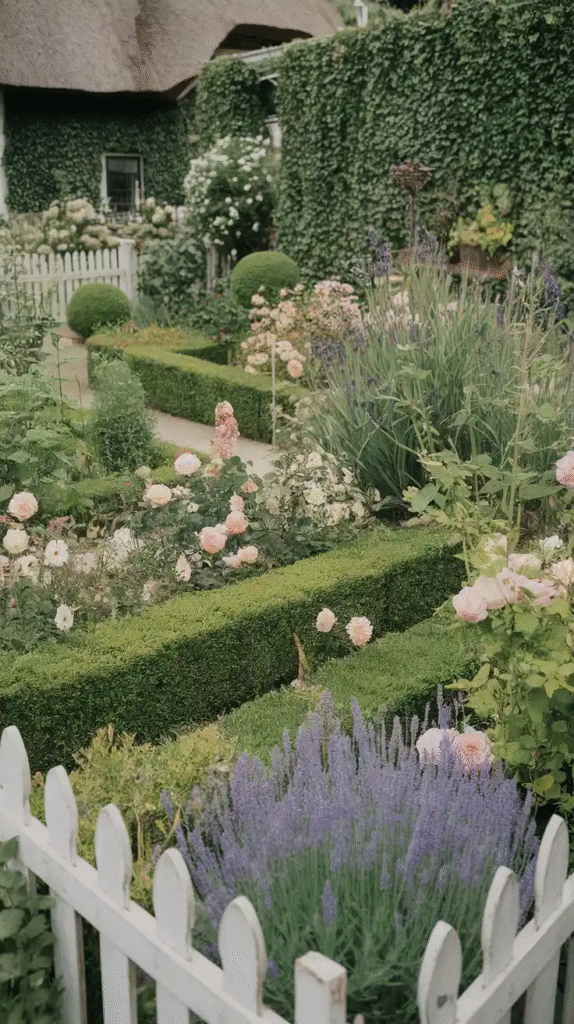
While cottage gardens are curated chaos, allowing a small patch of wildflowers or meadow grasses adds authenticity and supports local ecosystems.
I once left a corner untouched except for wild poppies and daisies. It became a favorite spot for bees and a bright, happy splash of color.
20. Personalize with Your Favorite Plants and Touches
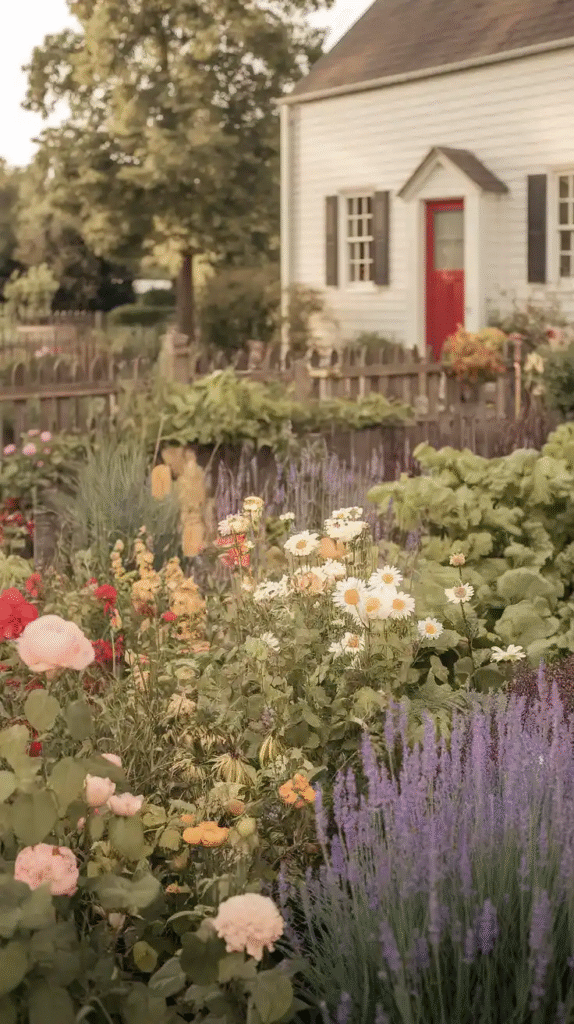
Lastly, remember the garden should reflect your personality and preferences. Whether you love sunflowers, herbs, or a particular color scheme, make the space yours.
My garden isn’t just a cottage garden; it’s my sanctuary, shaped by my hands, memories, and favorite blooms. The magic happens when you pour a bit of yourself into the soil.
Conclusion
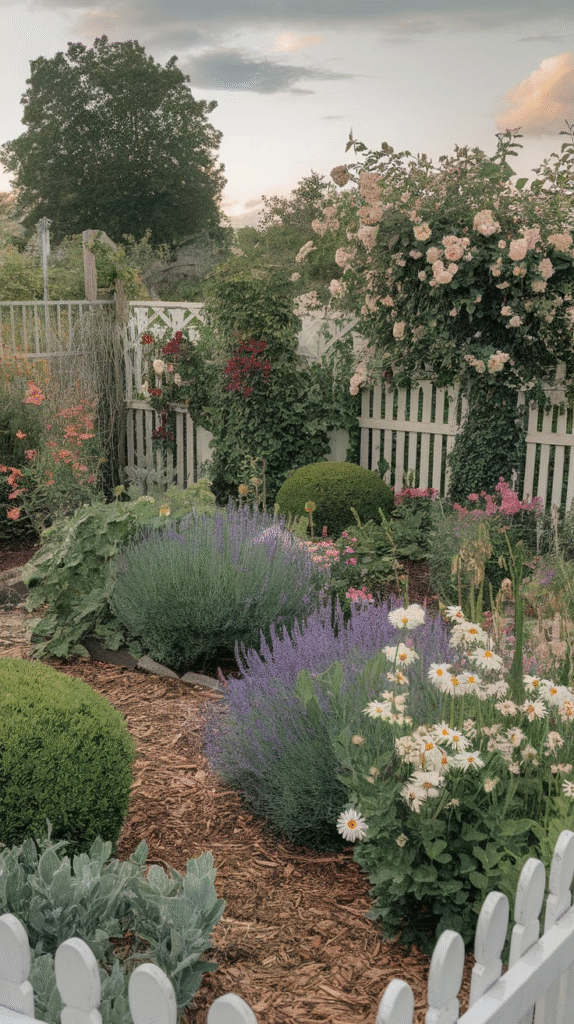
Creating a cottage garden is like composing a poem in plants — it’s personal, imperfect, and endlessly rewarding. The charm lies in the details: the scent of flowers on the breeze, the crunch of gravel underfoot, the humming of bees, and the quiet corners made just for you.
If you approach your garden with patience, creativity, and a willingness to let nature lead, you’ll soon find your own slice of paradise blossoming outside your door. So grab your gloves, let your imagination run wild, and transform your house surroundings into a cottage garden dream come true.

